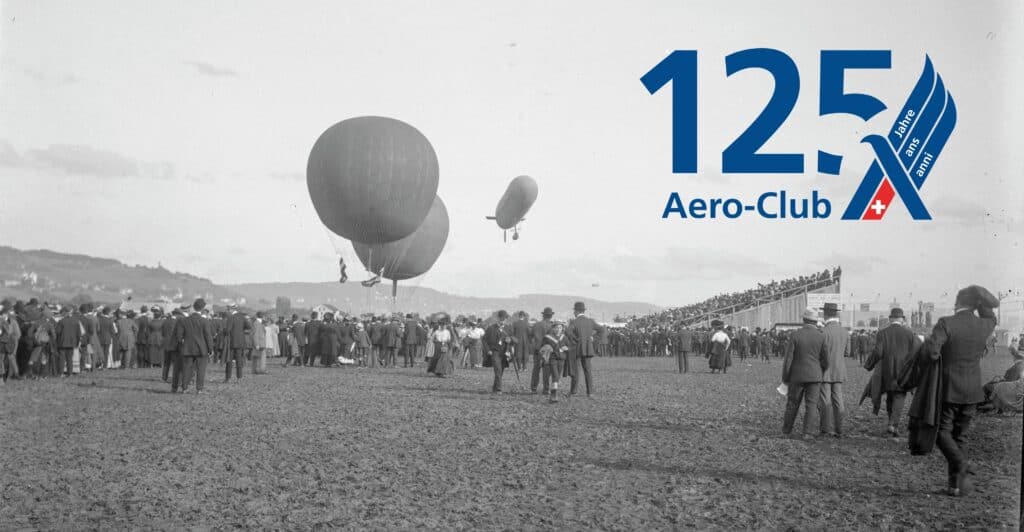
When the Aero Club of Switzerland was founded in Bern on March 31, 1901, balloonists were still among themselves. Soon 125 years after its foundation, the AeCS has 8 divisions, 35 regional associations and around 20,000 members. In the coming year 2026, we want to celebrate our 125th anniversary in style: not with a single ceremony or a large air show, but throughout the country and a variety of smaller events organized by our clubs.
On this website, which will be continuously updated over the next few months, you will find information about the activities of the year 2026 as well as background information in pictures and text about the 125-year history of the AeCS. The cover picture shows a snapshot of the Gordon Bennet competition in Zurich in 1909 (Image ETH Library)
Overview of all events
Time travel through the history of the AeCS

1901
Founding year of the AeCS
On March 31, 1901, the Swiss Aero Club was founded in Bern thanks to the initiative of Colonel Theodor Schaeck (photo). The association for the promotion of air navigation comprised 72 members, including the balloon pioneer Emil Messner. Here you can find the Articles of association from 1901.
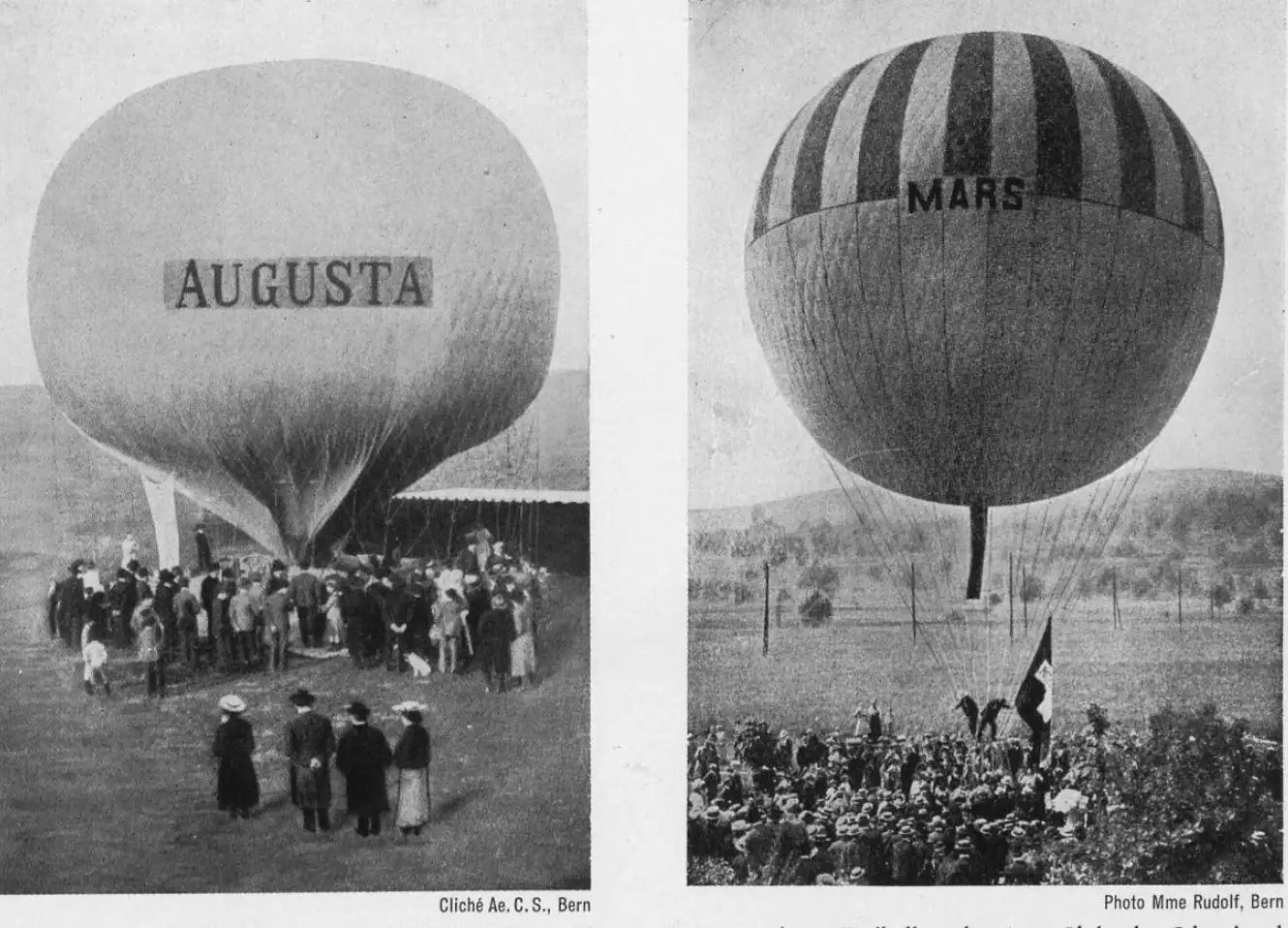
1903
The first balloon
After its foundation, the Aero Club collected money from its members for its own aircraft. The Mars balloon (right) was the club's first own balloon, which was ordered from Ballonfabrik Augsburg at a price of 7036 marks. A year earlier, Schaeck and club members had made their first flights in the Augusta balloon rented from the Aero-Club.

1906
1st Bulletin of the AeCS
"The General Assembly of the Schweiz. Aero-Klub on March 25, 1906 has decided...to publish its own club organ, which, if material is available, should appear every two months and bear the name: Bulletin of the Swiss Aero Club. This was the introduction to the Bulletin, the forerunner of today's Aero-Revue. Incidentally, it was not published under this name until 1922!
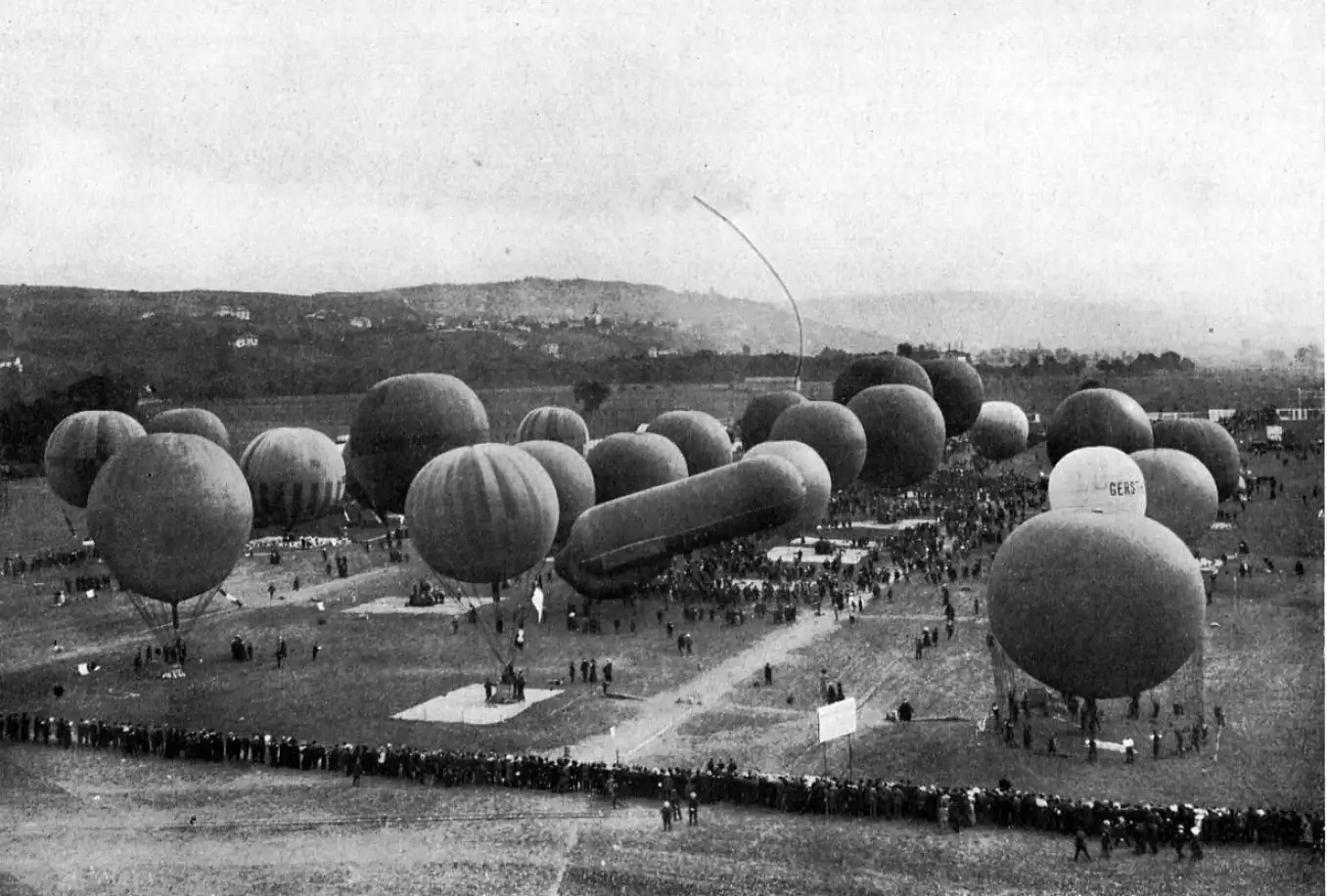
1908
1st Gordon Bennet
In 1908, Theodor Schaek and Emil Messmer won the already legendary Gordon Bennet race. The two balloonists were thought to have been lost for days after a flight with their balloon "Helvetia" over the North Sea. On October 14, the redemptive news arrived that the "Helvetia" had landed in Norway and had not only won the race, but had also set a world record. The first Gordon Bennet race with a starting point in Schlieren, Switzerland, thus took place in 1909. (see picture)
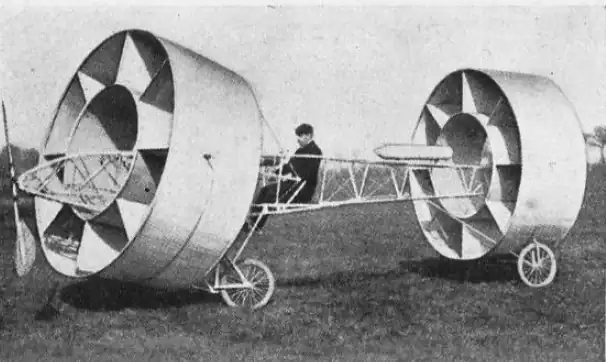
1909
All beginnings are difficult
Since its foundation, the Aero Club saw itself as a rather elitist gentlemen's club dedicated to aviation. The new form of aviation, "heavier than air", was difficult to accept in Bern. This was mainly because many of the designers and pilots came from a craftsman's background rather than academic circles. Accordingly, the numerous designers were denied any support. It was not until 1909 that the members learned in their club organ that, in addition to balloons and airships, there were also airplanes. The illustration featured Claude Givaudan's circular biplane, which inspired little confidence and, like numerous other prototypes from this period, never made it into the air.
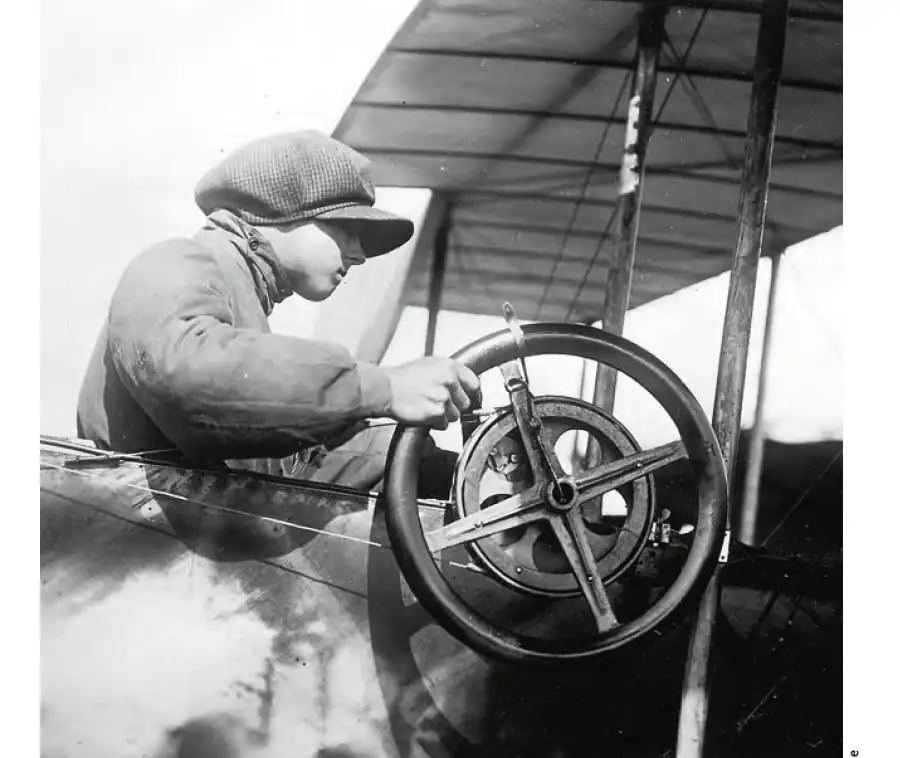
1910
The year of the powered flight pioneers
In 1910, daring pilots sent crowds of people into raptures with their daring aerial maneuvers. This marked the beginning of a decades-long aviation success story in our country. On October 10, 1910, Ernest Failloubaz (pictured), who was only 18 years old, was awarded the Aero Club's Brevet No. 1. He acquired a Blériot and founded Switzerland's first flying school in Avenches. Video: Premier vol du Blériot XI
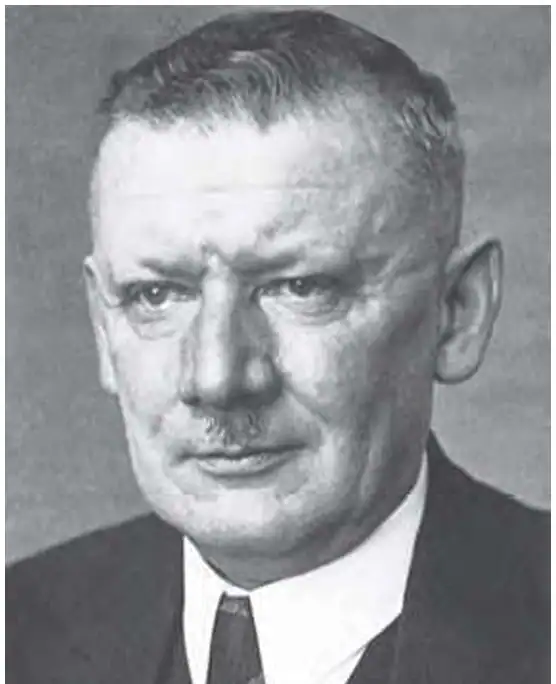
1920
Die Regulierung beginnt
Bis zum ersten Weltkrieg gab es weltweit kaum eine greifbare Regulierung der Luftfahrtaktivitäten. Dies änderte sich, als nach 1918 eine neue Epoche der zivilen Luftfahrt begann, zuerst mit Post-und Kurierflügen, bald aber auch mit Passagierflügen. Am 1. April 1920 nahm das Eidgenössische Luftamt unter dem Flugpionier und Fliegeroffizier Arnold Isler (Bild) seine Tätigkeit auf: damals noch als Abteilung des Post-und Eisenbahndepartements. 1979 wurde das Luftamt in Bundesamt für Zivilluftfahrt BAZL umbenannt.
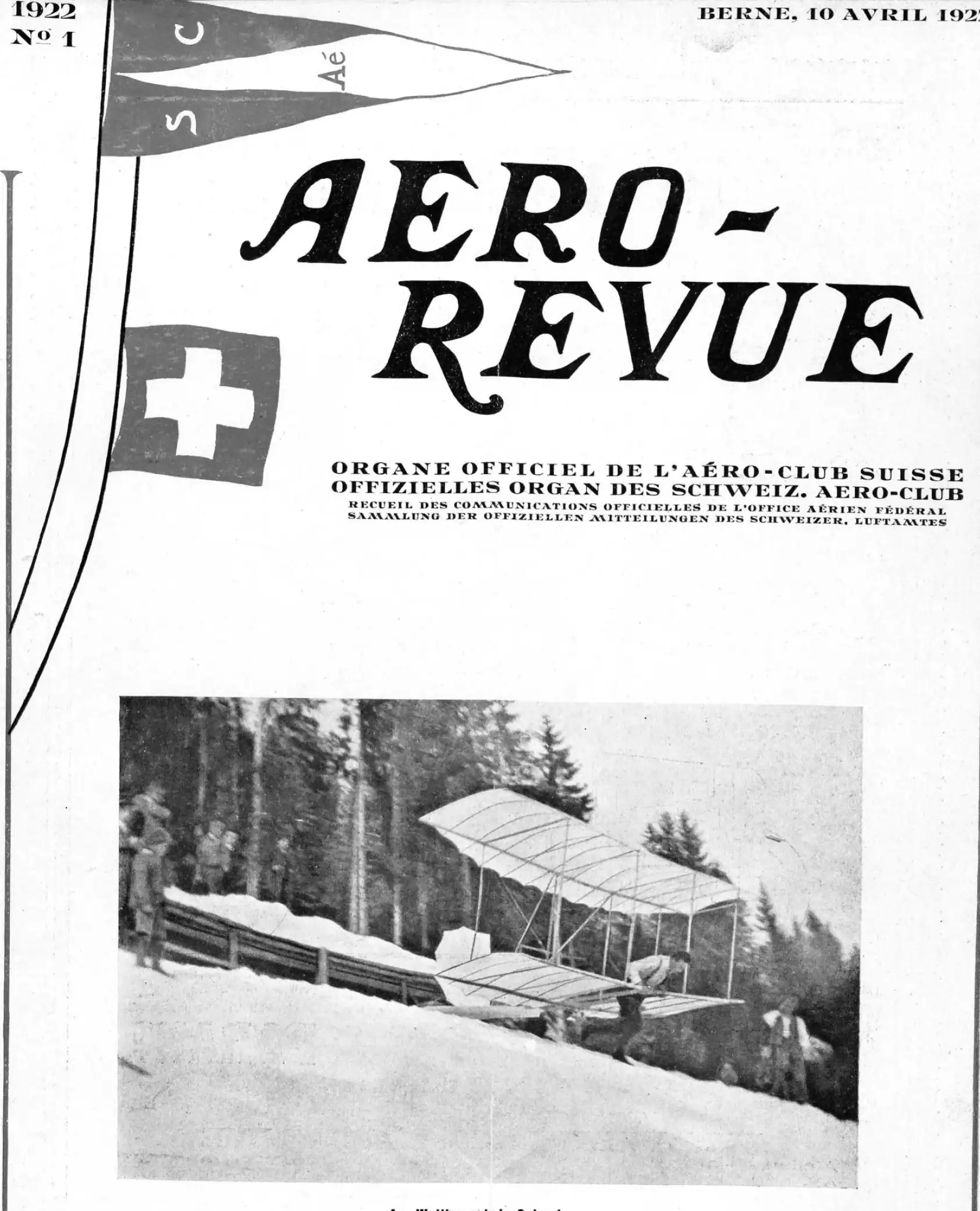
1922
The first AeroRevue
On April 10, 1922, the club organ of the Aero-Club appeared for the first time under the name AeroRevue. The 18-page magazine focused on the gliding meeting in Gstaad. However, the magazine also explained why the Bulletin or Suisse Aérienne magazine was no longer being continued: "Unfortunately, the club's organ was our problem child during the course of the year. Initially, there were frequent complaints about irregular publication, and also that the German language was not being given enough prominence, and that both the editor and the publisher were still not doing their jobs properly". The Aero-Club had a total of 636 members in 1922.

1929
FAI European Paragliding
With the first European sightseeing flight organized by the FAI, light aviation demonstrated the potential of the new generation of sports and touring aircraft. The event also attracted a great deal of attention in AeroRevue, albeit almost exclusively in French. From the April 27 to May 5, a major exhibition was held in Geneva. The event was also attended by the Messerschmitt BFW-M23, which went on to win the European round trip. Two Swiss teams with Klemm L25 also took part in the international competition part.
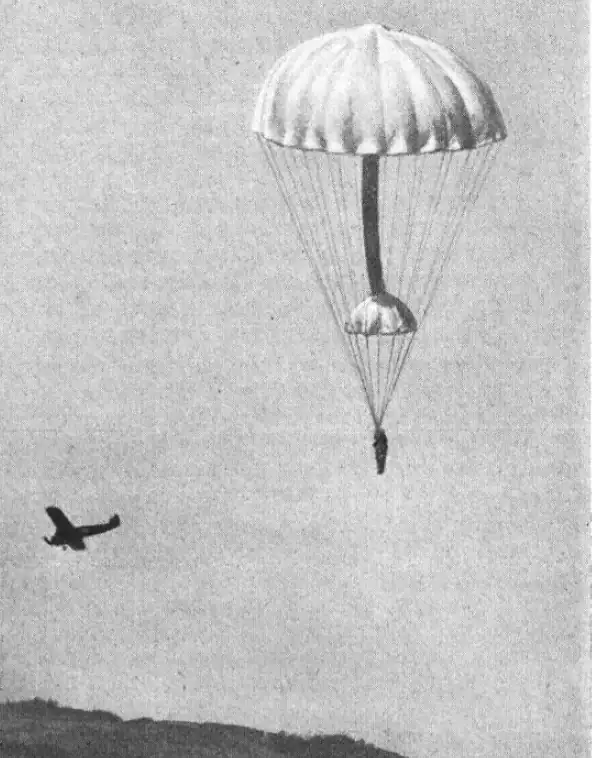
1930
A Swiss parachute
In 1930, AeroRevue presented a parachute designed by "Mr. Keller, aircraft designer from Zurich", which could be packed quickly and was said to be much safer than the conventional models of the time. The system was tested at Belp airfield (photo) and elsewhere. The lower small parachute is connected to the main parachute by a "fabric chimney". As soon as the small canopy is open, the ram air flows through the chimney into the main canopy and opens it. Despite all its advantages, including a built-in flotation device, the glider did not catch on.
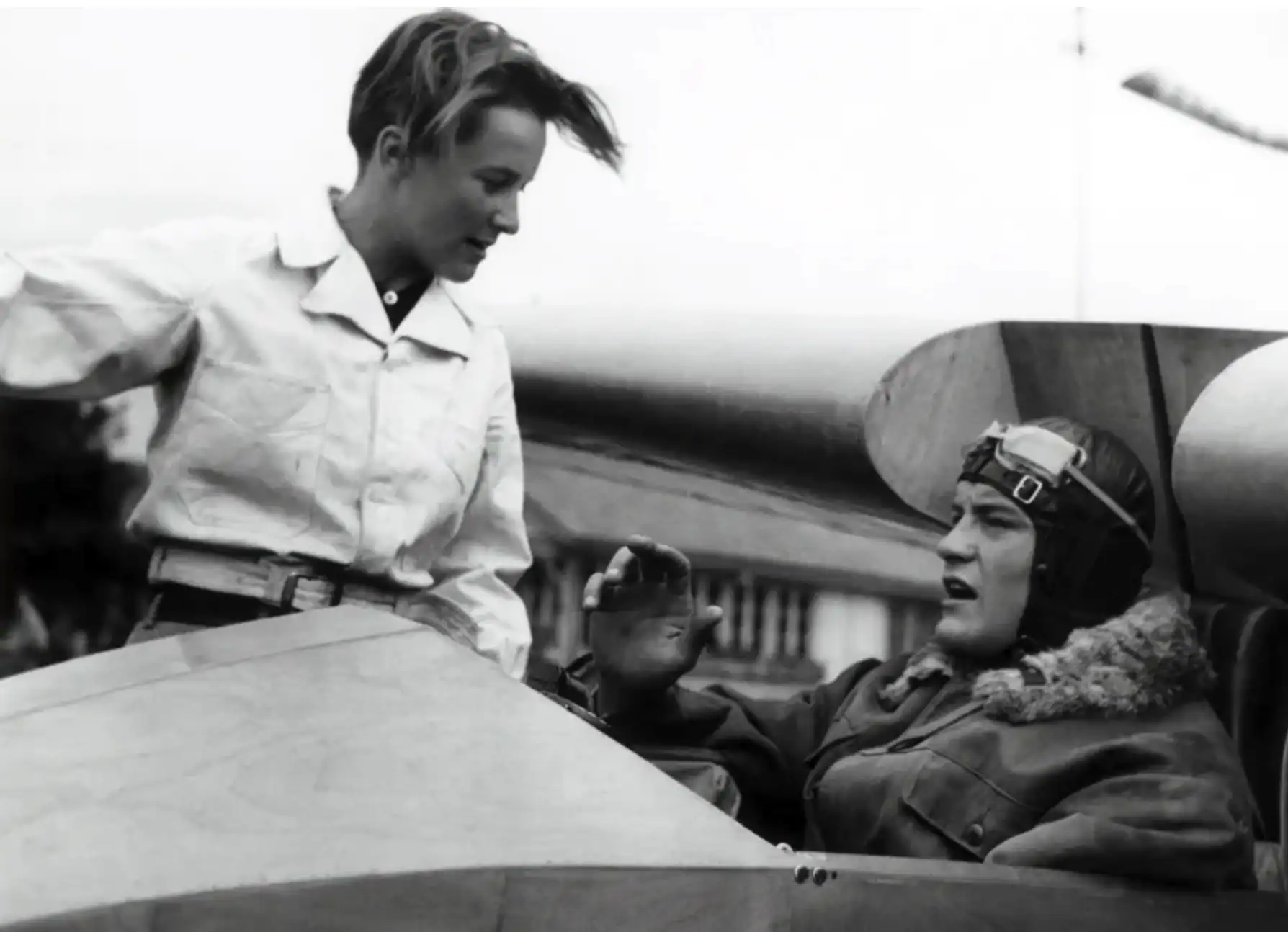
1934
First female glider pilot
On Nov. 8, 1934, Gritli Schaad, aged just 18, becomes the first Swiss woman to obtain a C certificate at Bern-Belpmoos airfield with certificate no. 40. In 1936, the mechanical engineering student and Fritz Schreiber set a new endurance record in gliding. (picture). The enthusiastic pilot receives the Spalinger S-18 HB-212 glider as a wedding present from her mother-in-law, which was restored to flying condition in Schupfart in 2019.
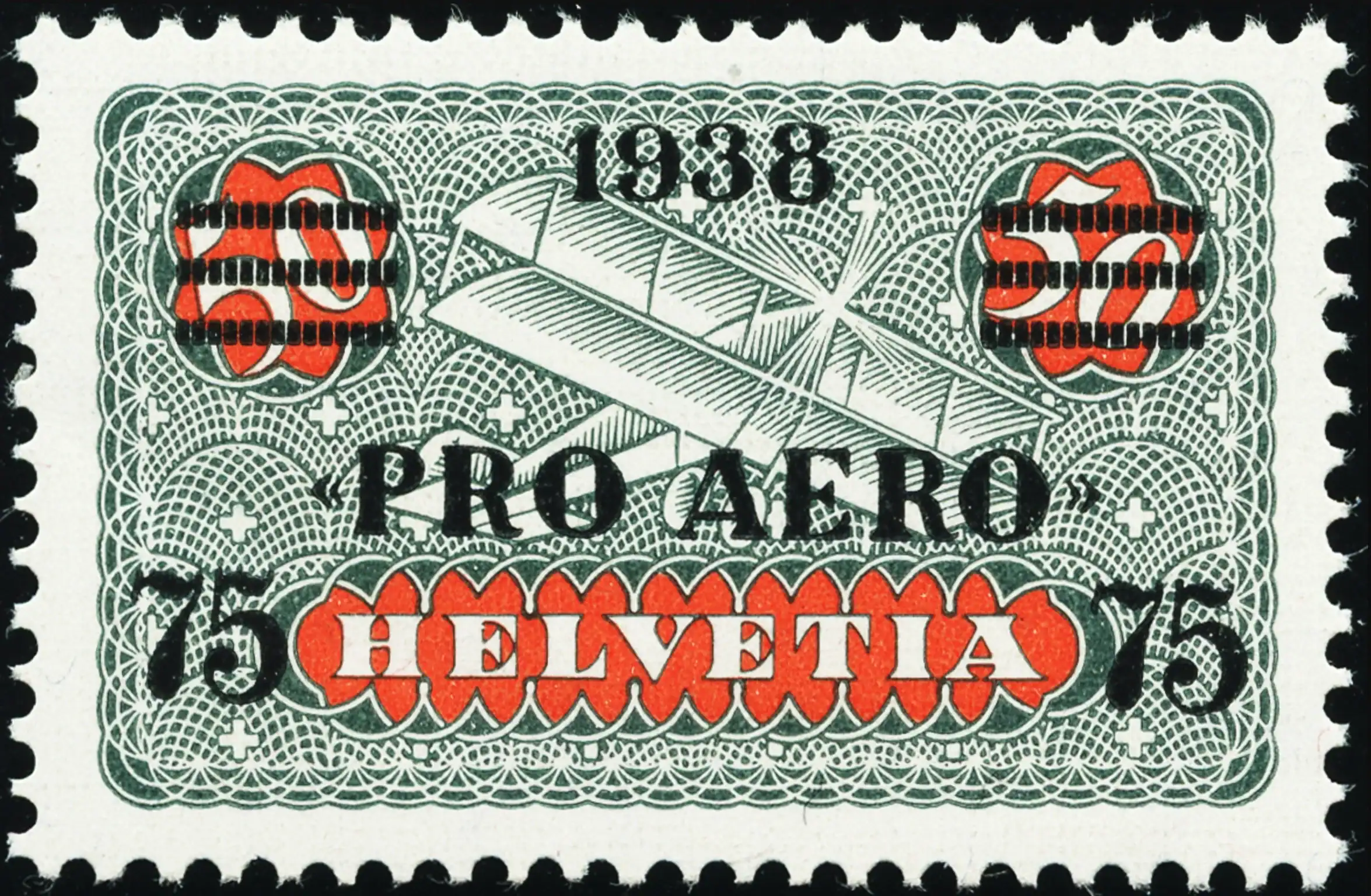
1938
Pro Aero Foundation
In order to give Swiss aviation new impetus and catch up with other countries, the "Pro Aero" foundation is set up on the initiative of the AeCS. Its purpose is "to awaken understanding and enthusiasm for aviation among the authorities and institutions and especially among young people." The sale of a special airmail stamp raises over CHF 139,000 for the foundation.
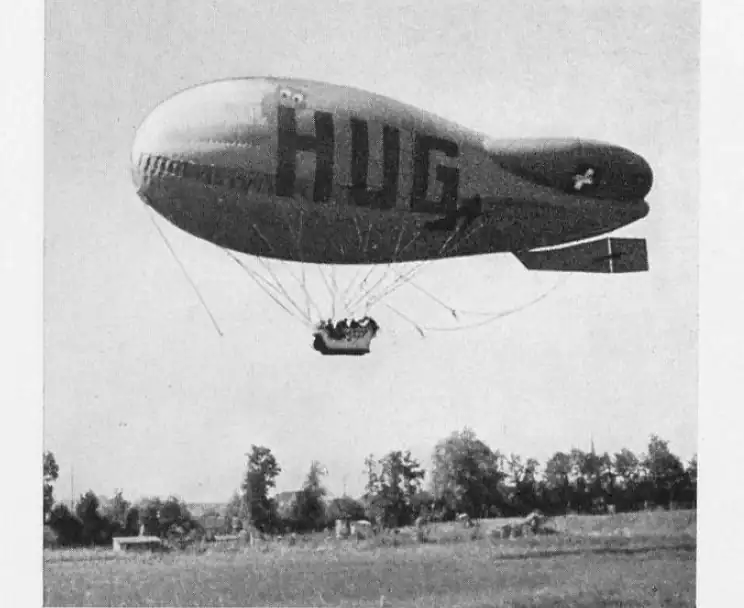
1939
The airship
In 1938, the AeCS Zurich section bought the small airship M7 from the army to carry out passenger flights over the national exhibition. With a crew of three, 1-2 passengers could be carried. The "Hug" airship was not destined to have a long life: On June 23, 1939, the airship burst into flames during the landing approach. The crew saved themselves with a daring jump into the depths.
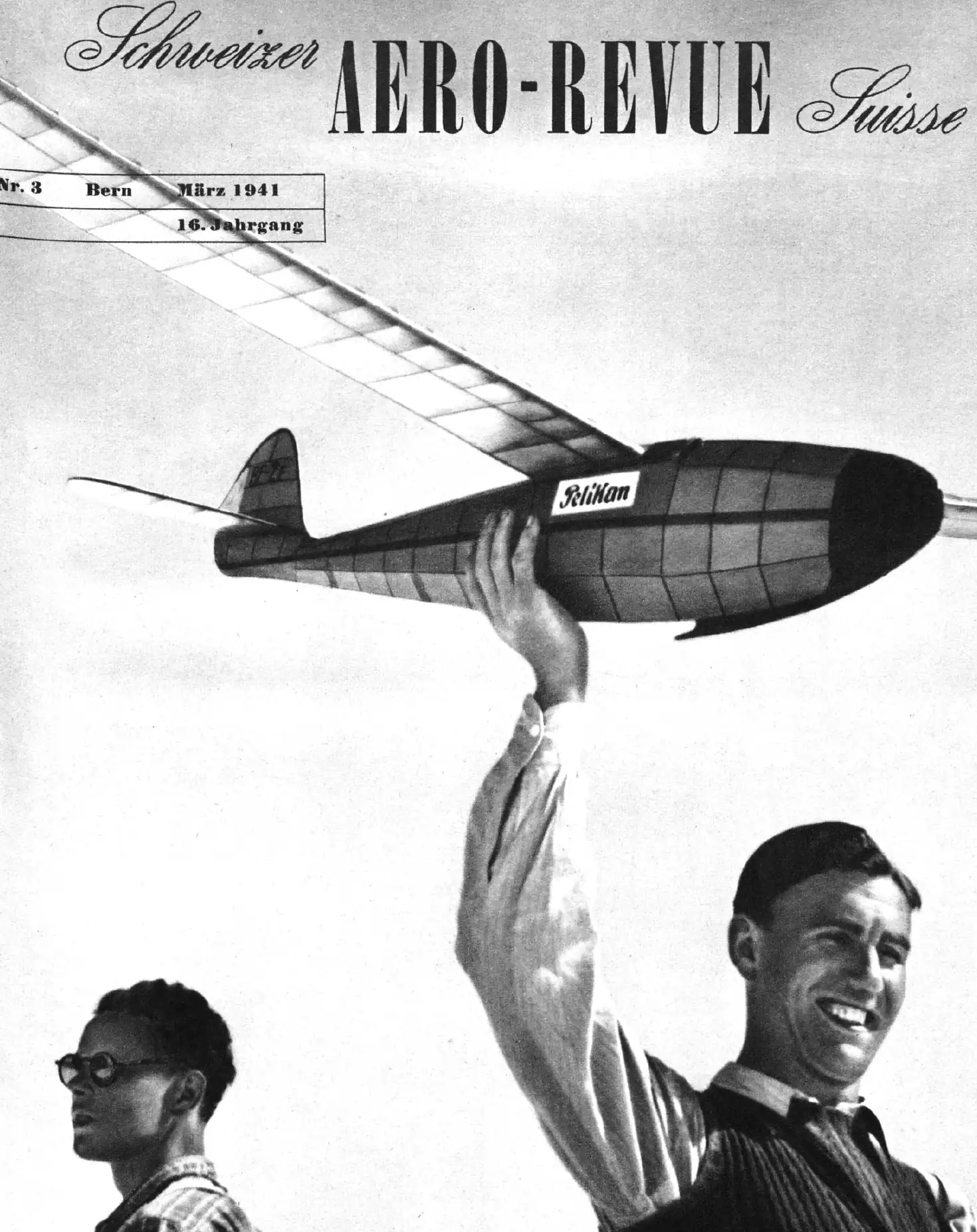
1941
Model flying in Arosa
Thanks to the Pro Aero Foundation, model flying was significantly promoted even before the start of the war. During the war, private powered flight was banned and gliding was only possible with restrictions. This made model flying all the more important. At the 5th Graubünden competition for model aircraft in Arosa A record participation of 22 groups, 113 participants and 162 models, including five models with gasoline engines, was recorded. The challenge prize of the Arosa spa administration was won by Willy Tauss from Bern (photo).
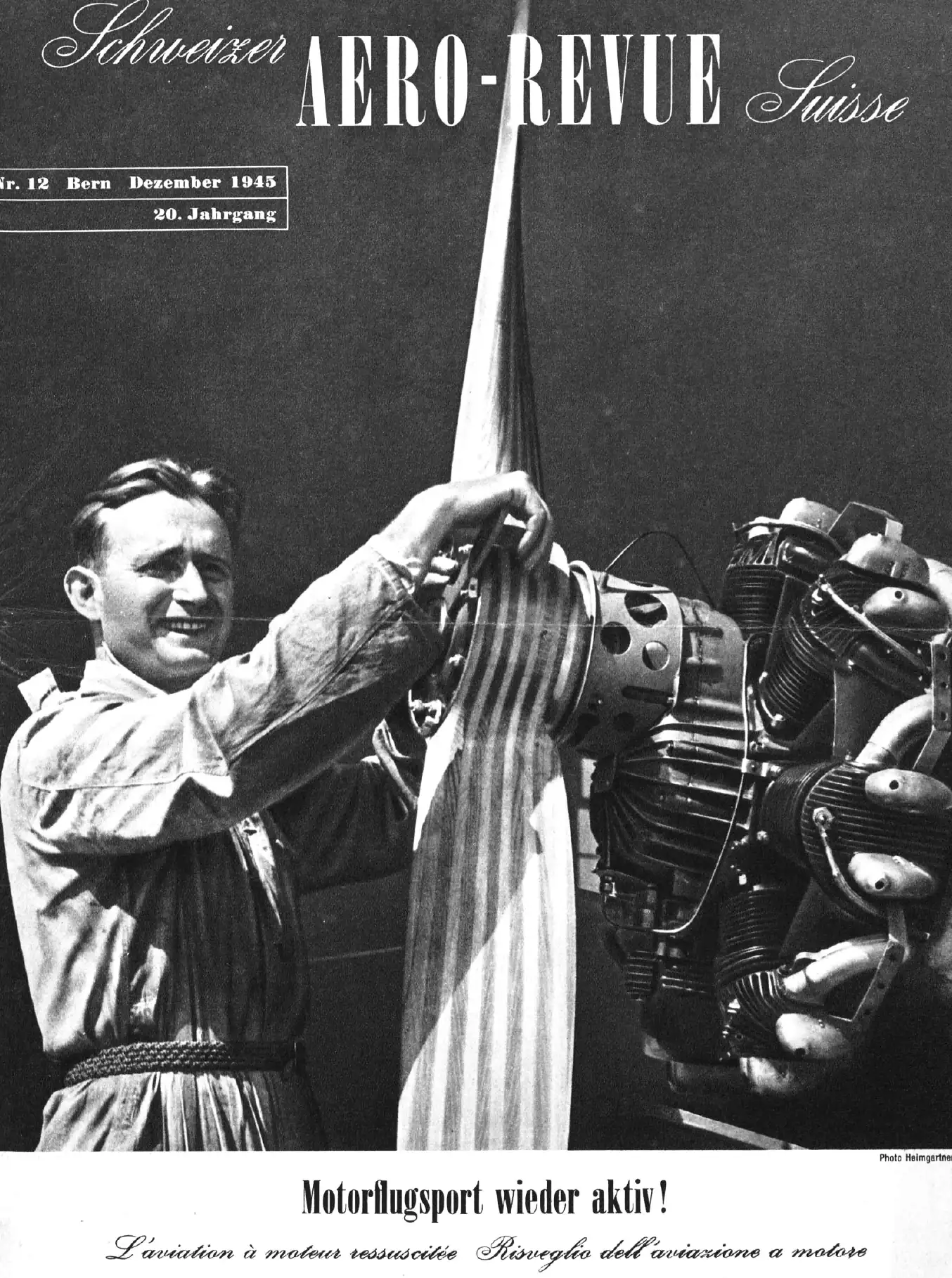
1945
End of the war
On August 20, 1945, the Federal Council lifts all airspace restrictions that had come into force in September 1939. This means that private motorized aircraft can finally take to the air again. This means that AeroRevue, which had been dominated by gliding, model flying and military aviation in recent years, can once again write about other topics. Aerorevue 12/45 writes: "We also celebrated our V-Day on August 20 with the lifting of the active status after almost 6 long, all too long years." However, the lack of fuel was still causing problems for motorized aviation.
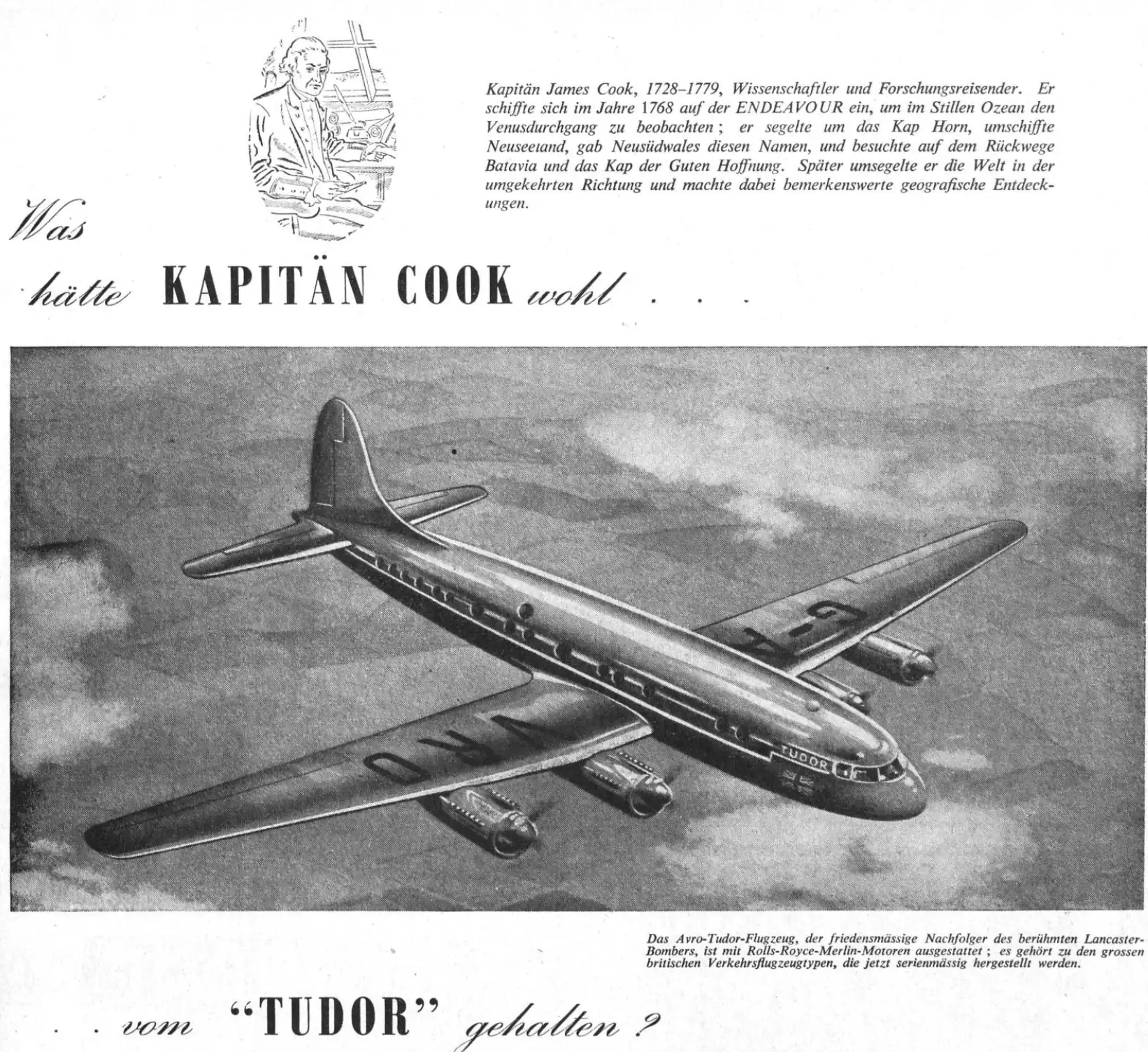
1946
The industry advertises
Hard to imagine today: AeroRevue lists six pages of advertisements after the cover. It is interesting to see how the British aviation industry, which at the time was still largely made up of wartime manufacturers, was able to develop, advertises its latest aircraft in AeroRevue. The range extends from the Avro Tudor to the Miles Aerovan. Neither aircraft was able to assert itself on the market, as the US competition and the many surplus cheap
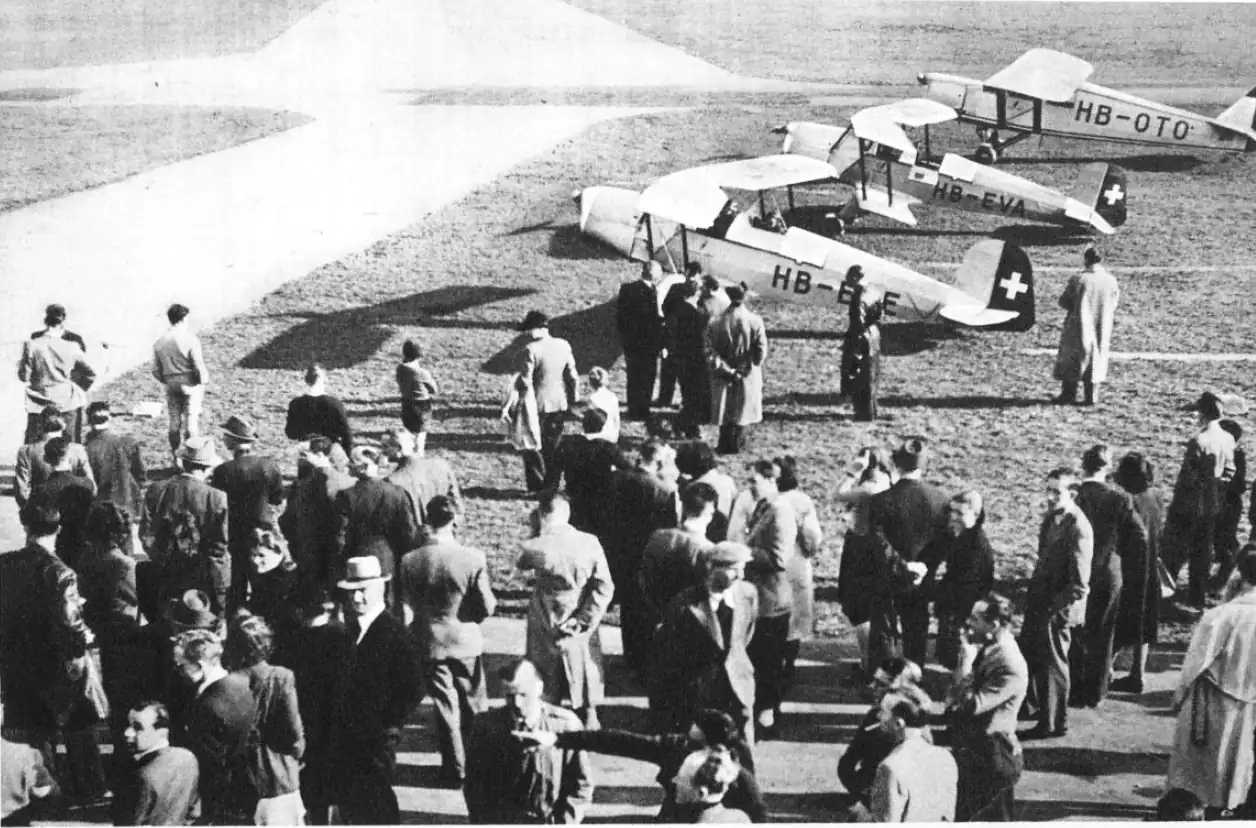
1946
Powered flight again at last
On March 23, the "first peacetime powered flight competition" took place in Dübendorf. This involved dropping a registration bag into a circle on the ground. However, the target was usually missed, as the circle was probably too small... Nevertheless, the excitement of finally being able to fly powered aircraft again after five years was great.
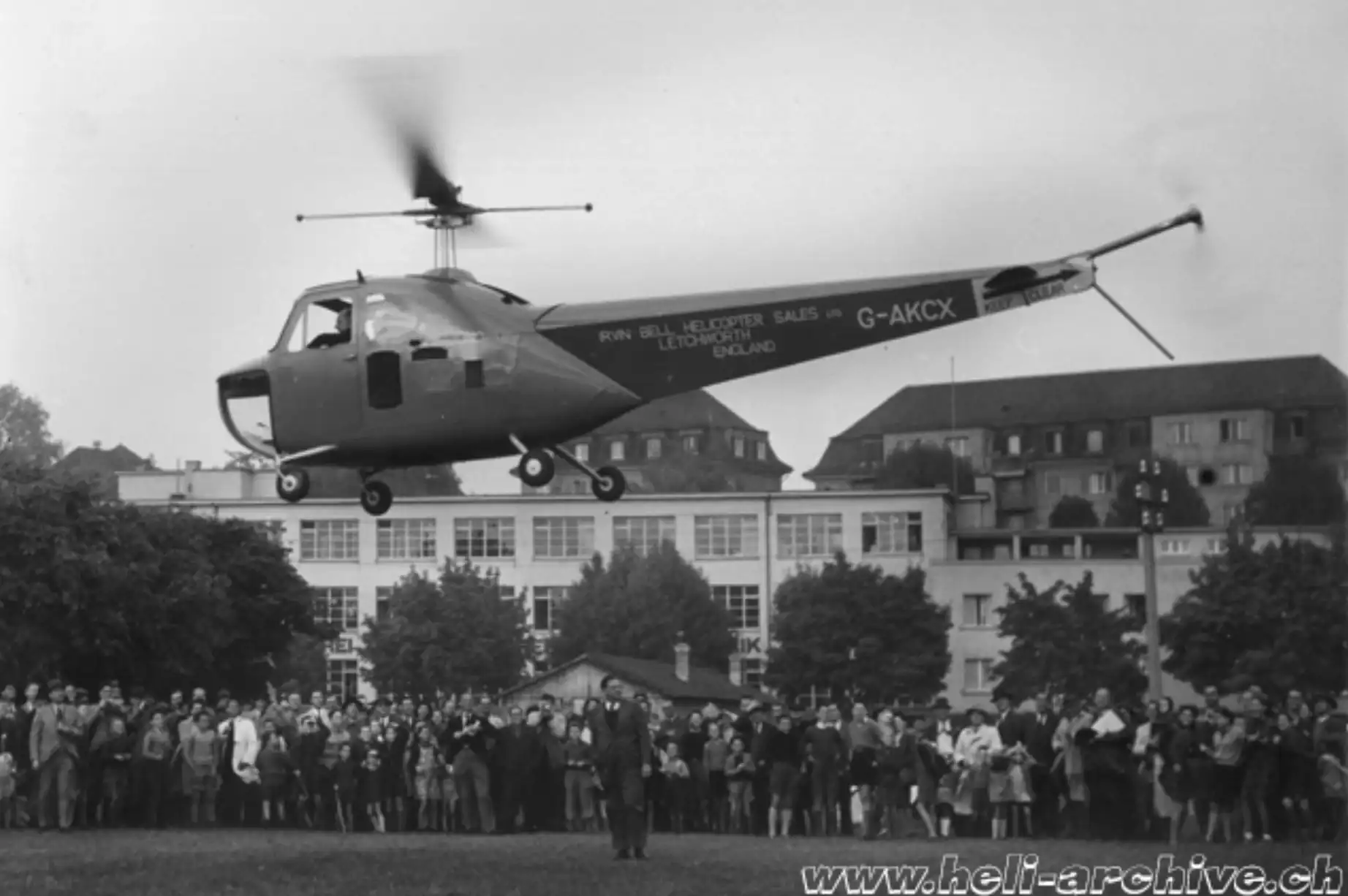
1947
The first helicopter
On October 13, British pilot Alan Bruce Hamilton "Jimmy" Youell presented the first helicopter to the Swiss public. The Brit presented the two-seater Bell 47B on the Allmend in Zurich Wollishofen. This marked the beginning of the triumphal march of an aircraft that would soon become indispensable in Switzerland, whether for mountain rescue or work flights. In 1993, the Swiss Helicopter Association SHeV was founded, one of the eight AeCS divisional associations. Comprehensive documentation on helicopters in Switzerland can be found in the Swiss Heli Archive by Mario Bazzani. And in this sspectacular video learn more about the history of the helicopter.
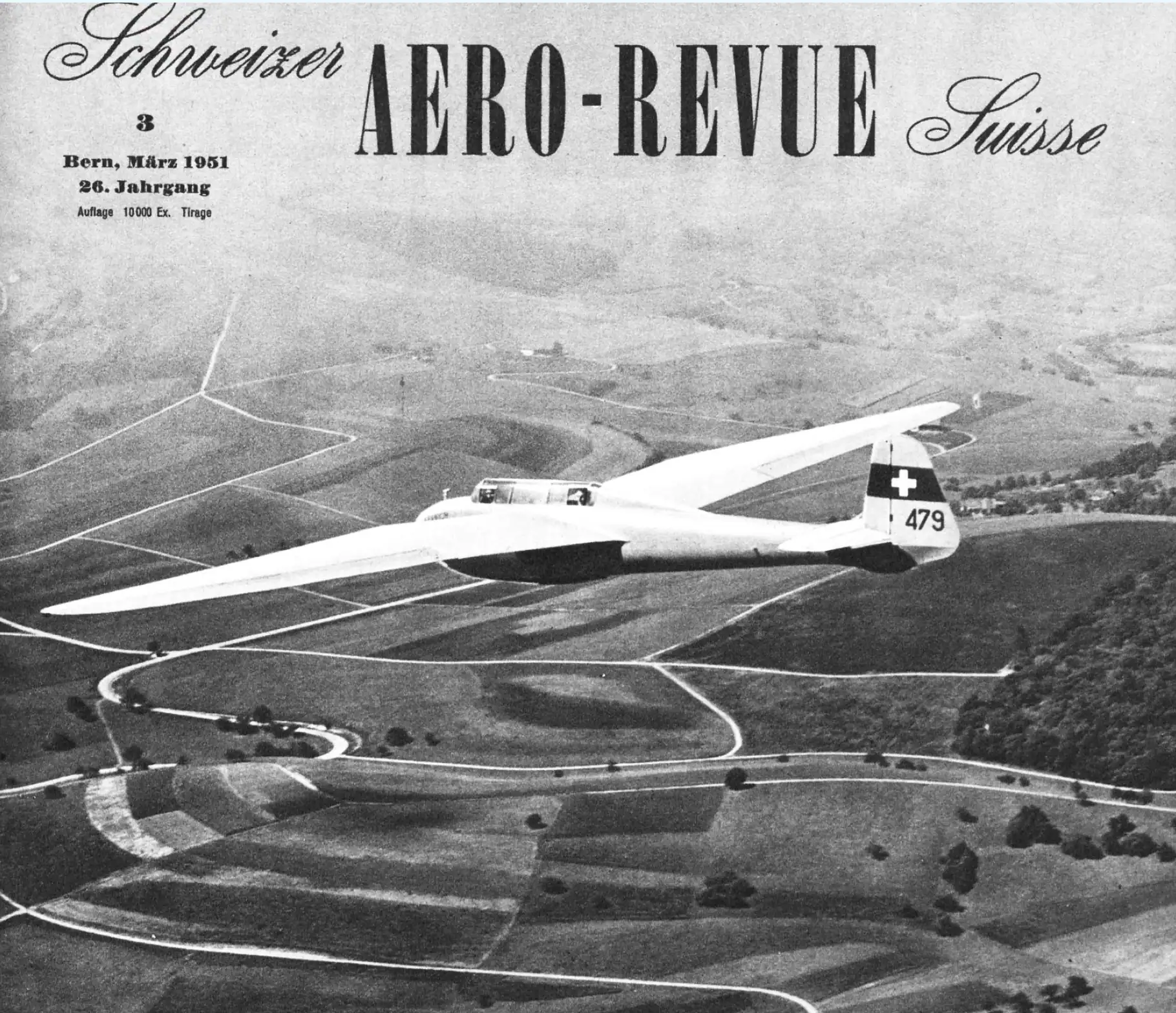
1951
50 years AeCS
The AeCS celebrates its 50th anniversary in 1951. Celebrating? In fact, the club seems to be in crisis mode. The AeCS comprises 33 sections with a total of 5816 members. "However, many of our sections and groups are struggling with major difficulties and are asking themselves whether it is worth contributing to the costs of the national club". How does Central President Dr. W. Muri answer this question? In the March 1951 issue, AeCS members are asked that it is a duty of honor to recruit at least one new member.
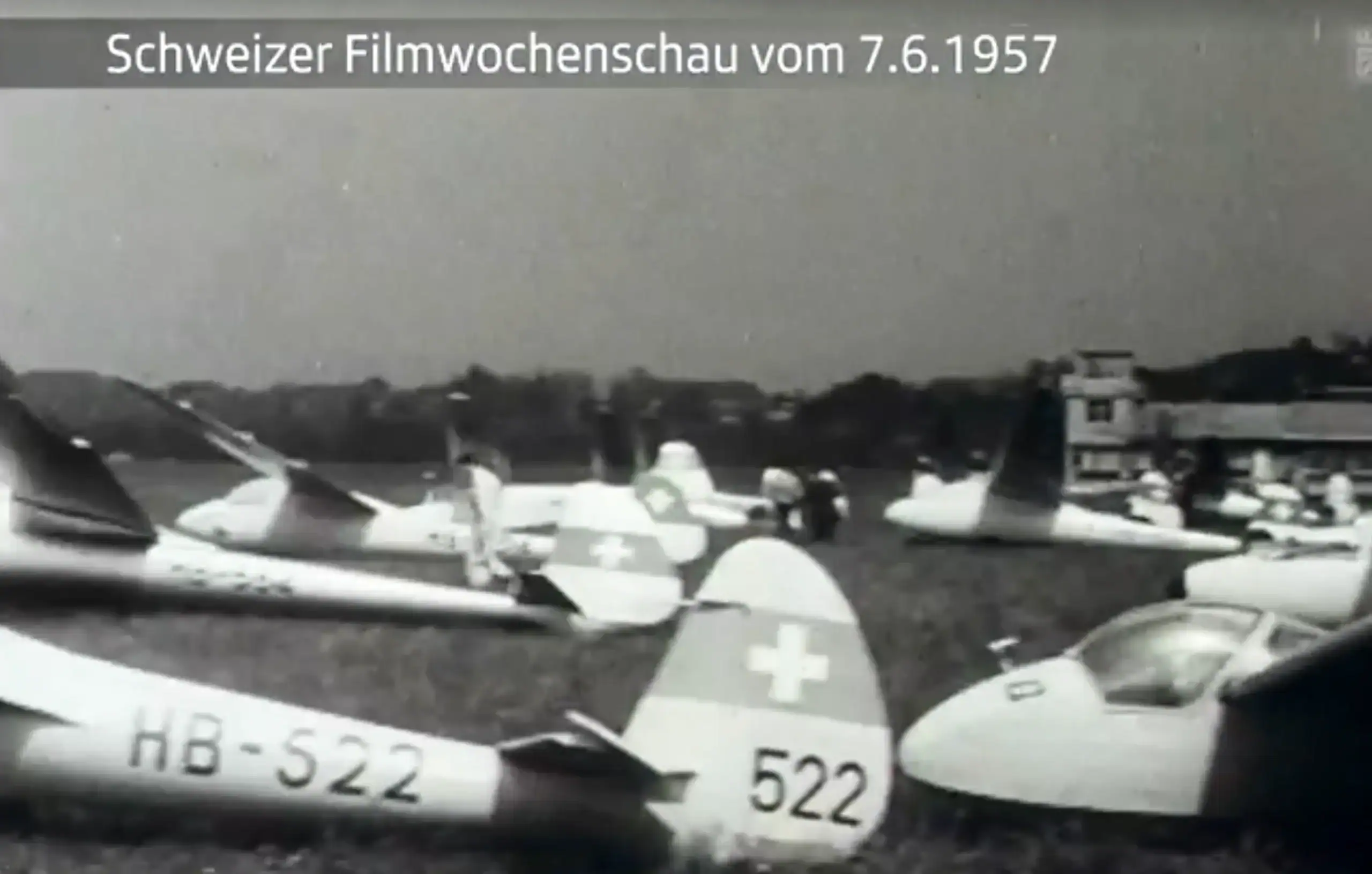
1957
Video gliding camp
The Swiss newsreel presented the cinema audience a short contribution (from 5:15) about the national gliding camp in Belpmoos. A cross-country flight from Belpmoos to Birrfeld was on the program that day. Due to the difficult weather conditions, only two pilots, including the legendary Hans (Housi) Nietlispach, completed the task.
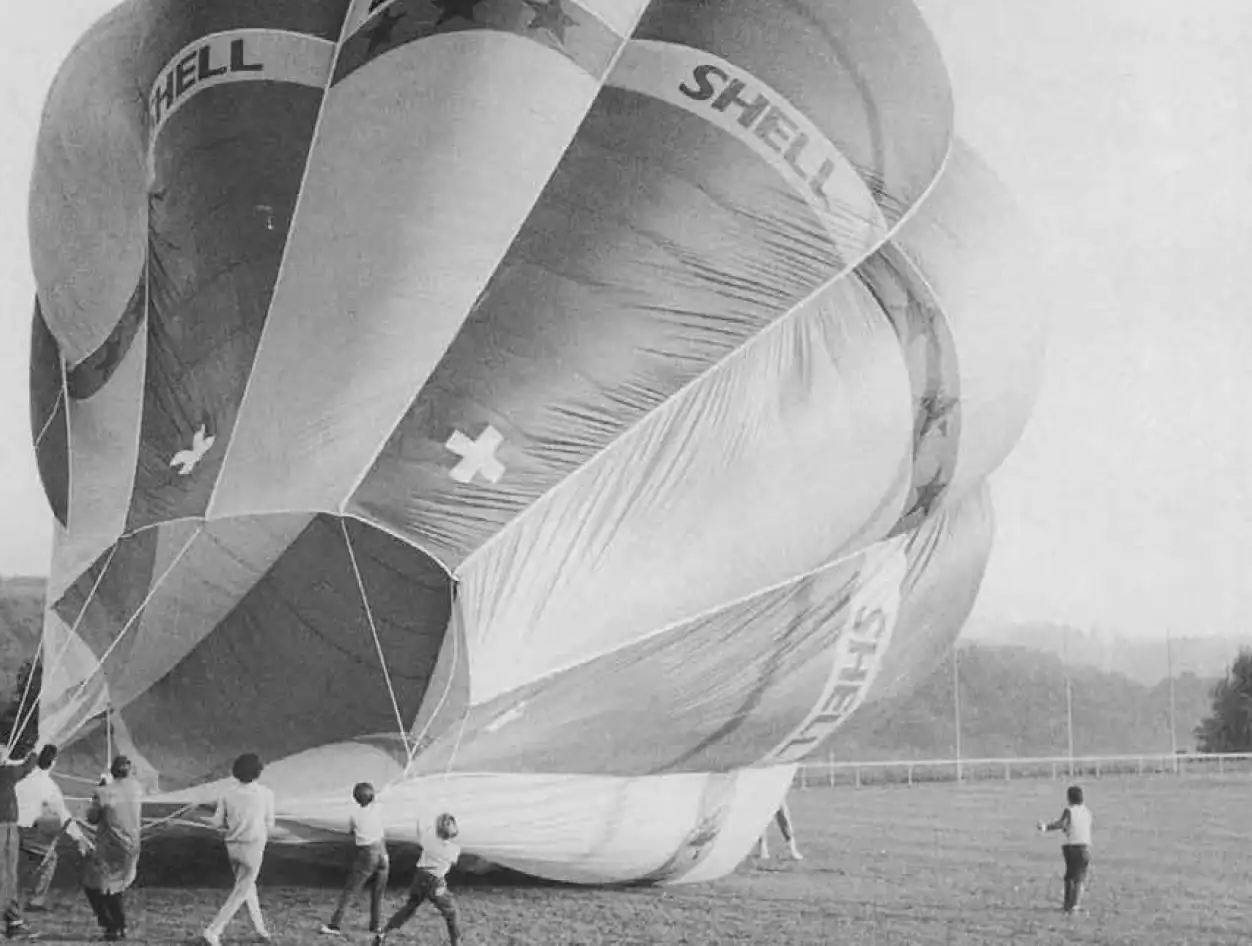
1966
The first hot air balloon
On August 29, 1966, Swiss balloonist Kurt Rünzi imported the first hot-air balloon from the USA to Switzerland. The Swiss Federal Aviation Office was not very enthusiastic about the new type of balloon, which was still unknown in Europe. Rünzi was only allowed to carry out the first test flights in 1967 after countless conditions had been met. Even then, he believed in the future of the hot-air balloon, as he told AeroRevue 50 years later.
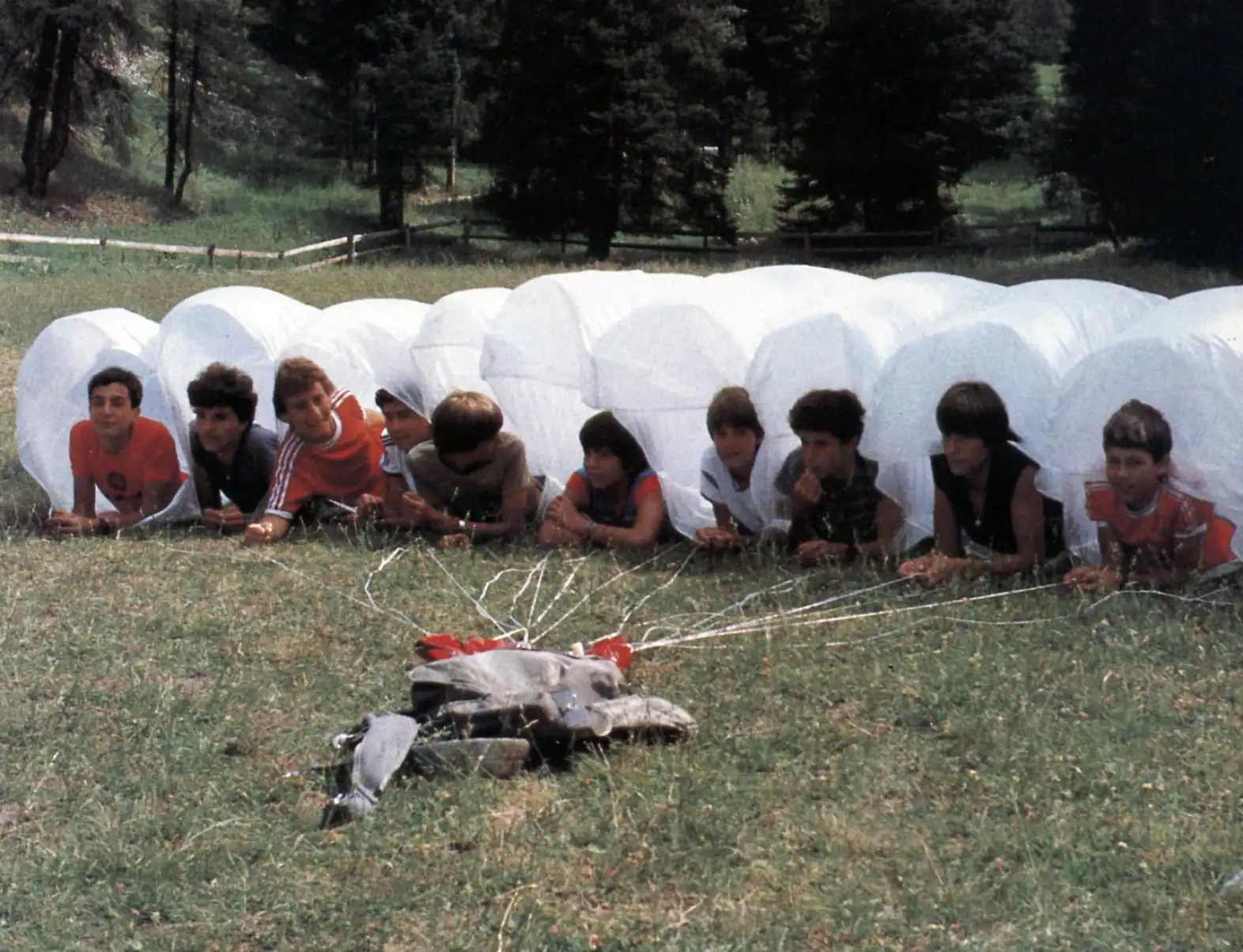
1983
First Pro Aero-JULA
On a hot July 31, 1983, around 60 young people, including three girls, gathered at the St. Moritz Youth Hostel for the Pro Aero Foundation's first aviation youth camp. In a humorous way, the AeroRevue editor about everyday life in the warehousewhich has not really changed much in the last 40 years.
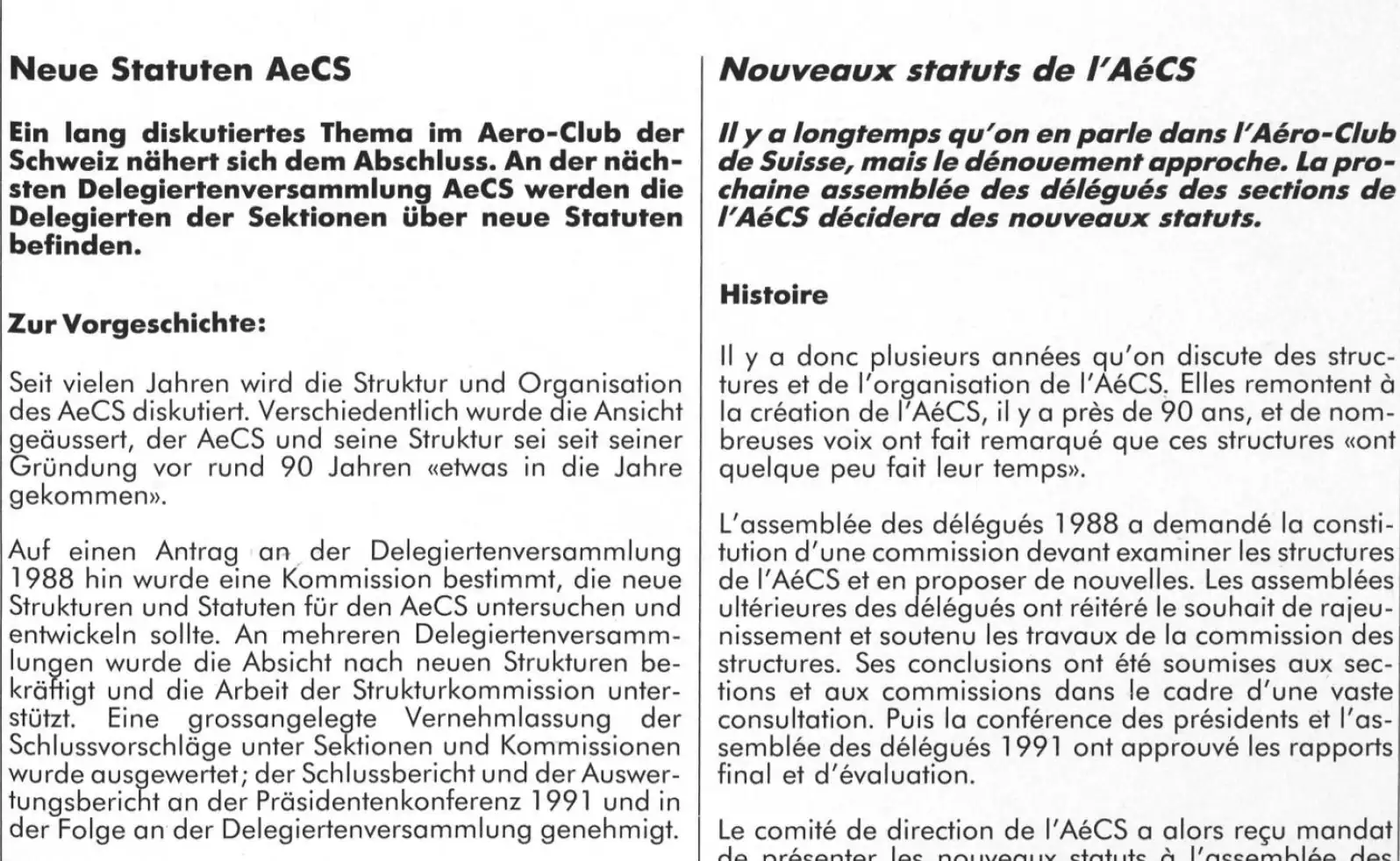
1992
A new structure
Amendment of the statutes: this does not usually sound so exciting to most members. However, after many years of preparatory work, the current structure of the AeCS was established. The divisional and regional associations were thus given a clearly defined remit. In the AeroRevue 1992/4 the members were informed, who is now responsible for which tasks under the umbrella of the AeCS.
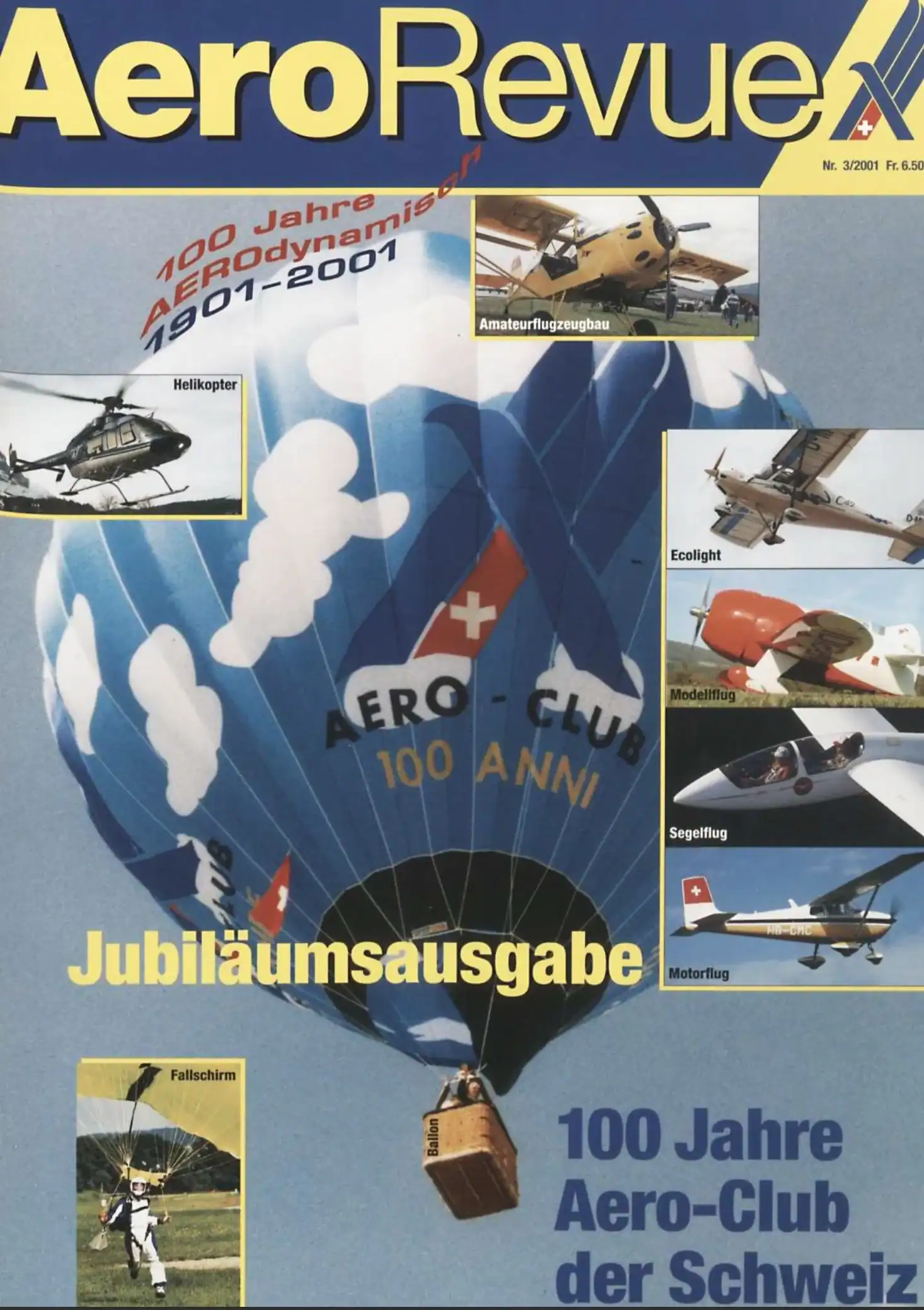
2001
100 years of AeCS!
In March 2001, the Aero Club celebrated its 100th anniversary. A special supplement of AeroRevue not only included greetings from the Federal Council and the head of the Swiss Air Force, but also many reviews of the association's eventful history.
What happened in 1909, and what happened to the little "airship"? We are delighted to present the AeCS and the associated history of Swiss aviation in an entertaining way to mark its 125th anniversary. In the "AeroRevue" from 2026, various topics will be described in detail throughout the year, from the beginnings to crises in general aviation. The pictures and text summaries of our short journey through time are taken from the epochal work "Swiss Aviation" by Dr. Erich Tilgenkamp and from the AeroRevue archive.
125 years Aero-Club of Switzerland - Song
125 years Aero-Club of Switzerland - Sponsors



